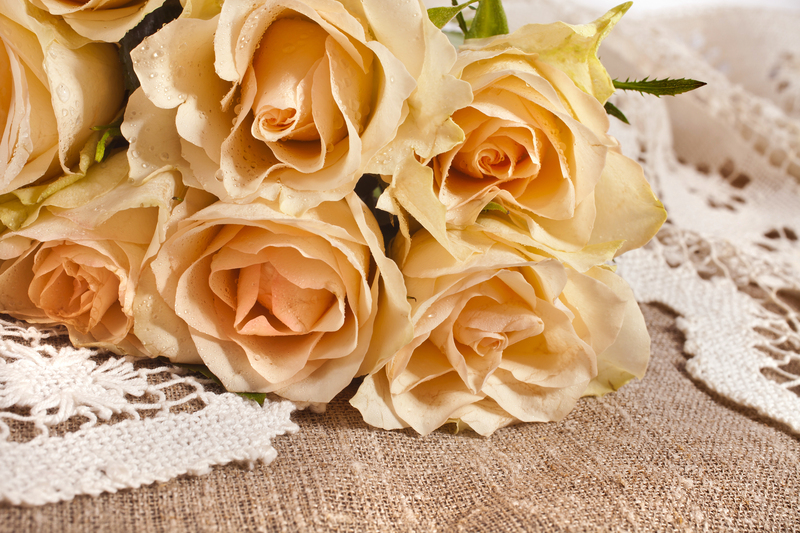Unlocking the mysteries behind vibrant orchid petals
Posted on 18/09/2025
Unlocking the Mysteries Behind Vibrant Orchid Petals
Orchids have held the world's fascination for centuries, captivating botanists, gardeners, and flower enthusiasts alike with their exquisite beauty and seemingly endless variety. From delicate whites to rich purples and every hue in between, vibrant orchid petals are a marvel of nature's palette. Yet, how do these exotic flowers achieve their electrifying colors and intricate patterns? In this article, we unravel the secrets behind the allure of radiant orchid blossoms, explore the science of pigmentation, and reveal how environmental and genetic factors come together to paint these masterpieces.
The Enchanting World of Vibrantly Colored Orchids
The appeal of orchids isn't just skin-deep. Their vibrant petals serve critical roles beyond beauty, aiding survival and reproduction. Across >25,000 known species, orchids display a tapestry of vibrant hues and designs that have evolved to attract pollinators, ward off predators, and adapt to diverse habitats. Let's dive into why the study of their colors is as dynamic as the flowers themselves.
Why Do We Love Vibrant Orchid Petals?
- Aesthetic Appeal: Their rich colorations fascinate collectors and hobbyists worldwide.
- Ecological Significance: The colors play vital roles in pollination strategies.
- Botanical Curiosity: The genetic mysteries behind these colors continue to intrigue researchers.

The Science Behind Orchid Petal Pigmentation
Major Pigments Contributing to Orchid Colors
To unlock the mystery behind vivid orchid petals, we need to understand the chemistry responsible for their brilliant colors. All flower coloration stems from a blend of organic pigments, primarily:
- Anthocyanins: Responsible for red, purple, blue, and some pink shades.
- Carotenoids: Impart yellow, orange, and some red hues.
- Flavonoids: Contribute to ivory and pale-yellow tones while also serving as co-pigments to anthocyanins.
- Chlorophyll: Sometimes visible in greenish petals or in developing buds.
These pigments, in various combinations and concentrations, produce the breathtaking spectrum we observe among orchids. But pigment presence isn't the only factor; their distribution, cellular structure, and interactions add further depth, intensity, and complexity to each petal.
The Role of Cellular Structure in Orchid Petal Vibrancy
Not all color differences result solely from pigment concentrations. The microscopic structure of orchid petals, including cell shape, arrangement, and even nanoscale features, manipulates how light is reflected, refracted, and absorbed. Many iridescent orchids exhibit a shimmering effect due to specialized cell layers that scatter light -- a phenomenon known as structural coloration.
Genetic Mysteries: How Orchids Develop Vibrant Blooms
The Genes that Paint the Petal
The genetic blueprint of an orchid determines the array and quantity of pigments in its petals. Modern genomic techniques have identified families of genes such as the MYB, bHLH, and WD40 gene clusters, which regulate the biosynthesis of anthocyanins and flavonoids. Furthermore, the regulatory genes decide when and where these colors emerge during petal development.
- Mutations and Variations: Small mutational differences can result in dazzling variations, giving rise to the incredible diversity in orchid petal coloration both in the wild and in cultivated hybrids.
- Selective Breeding: Orchid breeders harness these genetic intricacies, cross-pollinating species for enhanced vibrancy or unique patterns, contributing to the ever-growing array of spectacular orchids available today.
Epigenetics: The Influence of the Environment
Genetic potential alone doesn't account for the full vibrancy seen in many orchid petals. Epigenetic factors--changes in gene expression triggered by environmental conditions--can amplify or diminish flower coloration. For example, temperature, light exposure, nutrient availability, and even microbial interactions all influence pigment synthesis during key growth stages.
The Ecological Purpose Behind Orchid Coloration
Nature's Communication: Attracting Pollinators
The stunning hues and intricate markings of orchid flowers fulfill a crucial evolutionary role--enticing pollinators. Different pollinators are attracted to specific colors and patterns. Here's how various orchid petal hues serve the plant:
- Reds and Purples: Target birds and certain insects with color vision attuned to these shades.
- Blues and Violets: Often visible to bees, which see ultraviolet patterns that humans cannot.
- Yellows and Whites: Signal to a broader range of pollinators and sometimes mimic the appearance of rival flowers.
Some orchids even display deceptive coloration: patterns that mimic nectar guides or the appearance of female insects, luring pollinators with visual trickery. This intricate dance between orchids and their pollinators underscores the evolutionary importance of vibrant petal colors.
Camouflage and Defense
For certain orchids growing in dense rainforest or exposed habitats, petal color also provides camouflage from herbivores or serves as a warning against being eaten, thanks to associations with toxicity or bad taste.
Environmental Factors Affecting Orchid Petal Vibrancy
Light: The Artist's Touch
Sunlight isn't merely a requirement for photosynthesis--it directly impacts the intensity and hue of orchid petals. Studies reveal that exposure to UV light boosts anthocyanin and flavonoid production. Orchids grown in optimal lighting environments boast more intense and striking petal coloration compared to those raised in shade or artificial light.
Temperature and Humidity
Orchid coloration is sensitive to climate conditions. Sudden temperature drops may intensify red or purple hues due to stress-induced pigment accumulation. Humidity can affect the texture and sheen of petals, sometimes making colors appear deeper or more luminous.
Soil and Nutrient Factors
- pH Levels: The acidity or alkalinity of soil affects pigment expression, with some orchids changing color depending on these conditions.
- Nutrient Availability: Key minerals, especially magnesium and phosphorus, are necessary for pigment synthesis. Deficiencies can result in paler or washed-out petals.
Carefully manipulating these environmental variables, growers can encourage orchids to exhibit their most vibrant possible colors.
Famous Examples: Spectacular Orchids With Radiant Petals
Some Show-Stopping Species
- Cattleya orchids--Renowned for their large, vibrant purple and pink blooms.
- Phalaenopsis orchids--"Moth orchids" with broad petals in a spectrum of pinks, whites, and yellows.
- Vanda orchids--Well-known for their electric blues and violets, derived from both pigment and structural coloration.
- Oncidium orchids--Dancing Lady variety, often spotted and streaked with luminous yellows and browns.
Each species provides a unique glimpse into the adaptive and genetic processes fueling the diversity of vivid orchid blooms.
Orchid Hybridization: Cultivating Petal Brilliance
The Art and Science of Cross-Pollination
Orchid collectors and botanists have, for centuries, cross-pollinated wild species to create spectacular hybrids. The goal: combine traits such as larger blooms, longer-lasting flowers, and--most importantly--unforgettable petal vibrancy. Through generational selection, hybridizers can tease out new color combinations, intricate veining, and dazzling sheens previously unknown in the plant world.
- Orchid Shows: Global competitions showcase hybrid orchids, rewarding new breakthroughs in vibrant coloration.
- Consumer Demand: The desire for rare and radiant orchids has fueled a thriving international market for award-winning hybrids.
Preserving the Vibrancy: Caring for Your Orchids
Tips for Brilliant Blooms at Home
Unlocking the secrets of bright orchid petals doesn't require a laboratory--careful attention to these factors at home can enhance the vibrancy of your own orchid flowers:
- Provide Adequate Light: Place orchids in a spot with plenty of indirect sunlight to maximize pigment production.
- Optimize Temperature: Maintain stable temperature ranges suitable for your orchid's species to promote robust coloration.
- Feed Properly: Use specially formulated orchid fertilizers during the growing season for best pigment synthesis.
- Regulate Watering: Overwatering can wash nutrients away or cause root rot, leading to dull or faded petals.
- Humidity Matters: Many tropical orchids benefit from high humidity, which supports both petal coloration and overall health.

The Ongoing Mysteries of Orchid Color Research
Though we now understand much about the chemistry and genetics powering orchid petal vibrancy, many questions remain. Researchers are investigating how tiny variations in genetics, climate change, and even orchid-microbe interactions further influence petal coloration. Advances in biotechnology may soon allow us to engineer orchids with designer colors outside the current boundaries of nature.
Conclusion: Celebrating the Radiance of Orchid Petals
The mysteries behind vibrant orchid petals are a tapestry woven from chemistry, genetics, ecology, and artistry. Each flower is a testament to the delicate balance between nature's design and nurture's influence, providing endless inspiration for science, art, and horticulture. Whether you are a seasoned botanist, an orchid hobbyist, or simply an admirer of nature's wonders, understanding the processes that give rise to their stunning colors only deepens your appreciation for these fascinating blooms.
As research continues to peel back the layers of the orchid color enigma, we are reminded that beauty often hides within the smallest details--waiting for curious minds to unlock their secrets, petal by petal.
```
